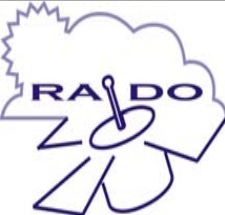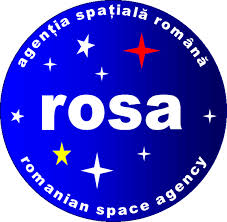Atmosphere Optics, Spectroscopy and Lasers Laboratory LOA-SL
|
At this time, LOASL is focussed to the following major projects: ENIAN:
The goal of the ENIAN project is based on two main directions: a) to study the fundamental aspects that characterize the interaction between the laser beam and polymers targets/ nanoparticle doped polymers via experimental methods and to develop a new theoretical model that describes processes (solid state changes after irradiation, plasma generation and expansion behavior, etc.); b) to improve the properties of the designed targets by means of PLD optical diagnosis, to reduce the contamination of the plasma, to enhanced ion acceleration. ENIAN project includes one of the highest technology necessary for the doping of thin composite layers (100-1000 nm) with nanoparticles (10-100 nm) in special experimental conditions (using 100 micron thick plastic substrate) that offer a wide range of critical parameters (vacuum, geometry, temperature, optical properties, roughness, thickness, etc.). Using the prototype of the new targets designed in Romania for standard laser target holders (FAIR) and characterize them, PLD composite layers will be both the core of further advanced research on hydrodynamic expansion simulation and to improve the quality of targets for x-ray generation in laser-plasma interactions. Optical and electrical properties of the laser produced plasma and ion acceleration in the both BPA and TNSA regimes depend strongly by the laser parameters (the pulse energy, the laser fluence, the pulse width, the laser repetition rate), the irradiation conditions (size of the focal point, the presence of the pre-pulse) and the target composition and geometry (the target thickness, multilayer’s, nanostructures, etc). In order to increase the laser energy absorption in the thin foils and the transfer of the laser light energy to the plasma, advanced targets will be further developed according needed FAIR infrastructure projects (APPA/MML/Plasma Physics/PHELIX ). Furthermore, optimal target thickness and embedded NPs types in the polymer target must be analyzed according to the light absorption coefficient in the wavelength range from UV to near IR. Used embedded metallic NPs and PLD thin layer deposed on the polymers films permit to increase the laser absorbance in thin targets.
ROBIM: The ROBIM project (MicroLIBS sensors for robotic planetary and astrobiological exploration missions) is focused research, to design and validate miniaturized equipment able to working in exploratory space missions with severe constrains (environment gas mixture, pressure, temperature, etc). Our technology is based to enhance the ablative and emissive stage of the plasma by means dual-pulse LIBS in order to enhance the analyte peak-to-base and signal-to-noise ratios, and atoms and ions line spectra. Taking into account the advantage of dual pulse LIBS technology, choosing various wavelengths and a high repetition rate of the lasers, we propose an instrument able to remote the chemical compounds behaviors in various environmental conditions based on the measurements obtained not only by LIBS but also by Raman coupled spectra according to each used laser. The obtained Raman spectra are dependent on time profile of the plasma plume and consequently we enhance the potential of the LIBS to investigate furthermore the phase changes and trace compound especially in the ice/soil mixture samples (depending on the temperature). Following, time-space resolved emissions Raman Spectroscopy is used to measures in a second the elemental compositions of the soil/rock. The expected results in the ROBIM project are related to the realization of a strong infrastructure, a new analytical tool used in a variety of severe environmental conditions (terrestrial atmosphere, space missions) able to analyse the traces of gas and soil compounds to identify the composition chemistry, to measure elemental temperature or densities. Experiments aim at a better understanding of the fundamental processes that take place in the evolution of transient plasma laser ablation in a variety of extreme environmental conditions. Although LIBS technology supports a large number of applications, the laser ablation mechanism (which depends on the wavelength, repetition rate, laser pulse width, target type or working gas, etc.) is not yet fully elucidated, especially in extreme conditions, such as those for space missions.
|





